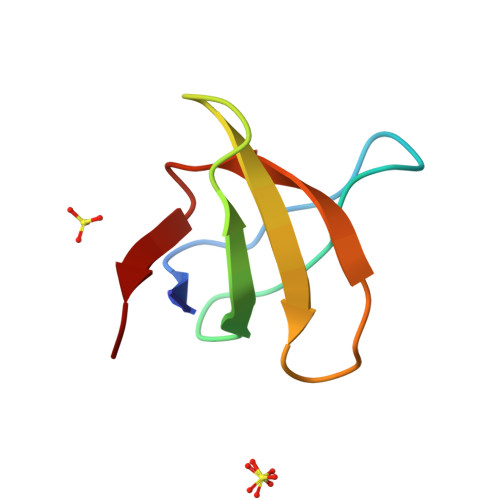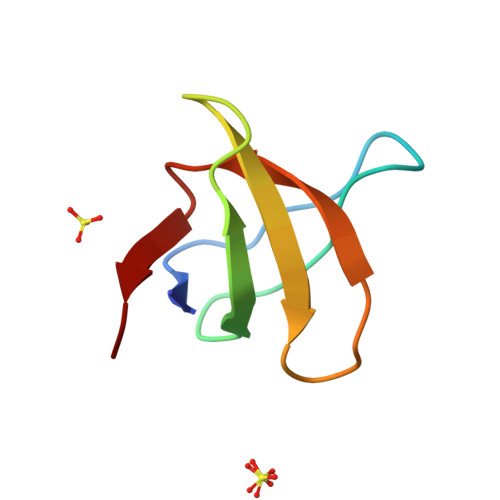Unusual binding properties of the SH3 domain of the yeast actin-binding protein Abp1: structural and functional analysis.
Fazi, B., Cope, M.J., Douangamath, A., Ferracuti, S., Schirwitz, K., Zucconi, A., Drubin, D.G., Wilmanns, M., Cesareni, G., Castagnoli, L.(2002) J Biological Chem 277: 5290-5298
- PubMed: 11668184
- DOI: https://doi.org/10.1074/jbc.M109848200
- Primary Citation of Related Structures:
1JO8 - PubMed Abstract:
Abp1p is an actin-binding protein that plays a central role in the organization of Saccharomyces cerevisiae actin cytoskeleton. By a combination of two-hybrid and phage-display approaches, we have identified six new ligands of the Abp1-SH3 domain. None of these SH3-mediated novel interactions was detected in recent all genome high throughput protein interaction projects. Here we show that the SH3-mediated association of Abp1p with the Ser/Thr kinases Prk1p and Ark1p is essential for their localization to actin cortical patches. The Abp1-SH3 domain has a rather unusual binding specificity, because its target peptides contain the tetrapentapeptide +XXXPXXPX+PXXL with positive charges flanking the polyproline core on both sides. Here we present the structure of the Abp1-SH3 domain solved at 1.3-A resolution. The peptide-binding pockets in the SH3 domain are flanked by two acidic residues that are uncommon at those positions in the SH3 domain family. We have shown by site-directed mutagenesis that one of these negatively charged side chains may be the key determinant for the preference for non-classical ligands.
Organizational Affiliation:
Department of Biology, University of Rome Tor Vergata, Via della Ricerca Scientifica, 00133 Roma, Italy.



















